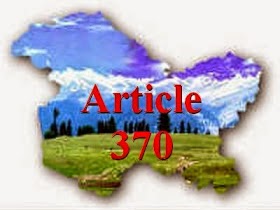IBPS CLERK IMPORTANT GK
1. The Sansad Adarsh Gram Yojana was launched on the birth anniversary of ____?
(1)
Mahatma Gandhi
(2)
Sarrdar Vallabhbhai Patel
(3) Jai
Prakash Narayan
(4)
Shaheed Bhagat Singh
(5) None
of these
2. Who among the following was the flag
bearer of the Indian contingent at 17th Asian Games opening ceremony in
Incheon, South Korea?
1) Sania Mirza
1) Sania Mirza
2) Saurav
Ghosal
3) Sardar
Singh
4) Dipika Pallikal
4) Dipika Pallikal
5) None
of these
3. We often read about the term gold ETF
in the financial newspapers. What does letter ‘T’ denote in the term ETF?
1) Traded
1) Traded
2)
Transferable
3)
Transaction
4)
Termination
5) None
of these
4. India conducted the fourth joint
military exercise ‘Hand-in-Hand 2014’ with which of the following countries?
1) Russia
1) Russia
2) US
3) Germany
4) Japan
5) China
5. FILA is the international body
responsible for supervising which of the following games?
1) Weightlifting
1) Weightlifting
2)
Wrestling
3)
Archery
4)
Football
5) None
of these
6. Recently Prime Minister Narendra Modi visited
Fiji after attending the G-20 summit in Australia. Which of the following is
the capital city of Fiji?
1) Luanda
1) Luanda
2) Port
Louis
3) Suva
4)
Libreville
5) None
of these
7. The Prime Minister Narendra Modi has
made his debut among the world's most powerful people on the Forbes list of
2014 released recently. He has been ranked at which of the following positions?
1) 64th
1) 64th
2) 57th
3) 36th
4) 21st
5) 15th
8. How many withdrawals are allowed in a
month in the bank accounts opened under the Pradhan Mantri Jan Dhan Yojana
across the country?
1) Three
1) Three
2) Four
3) Five
4) Ten
5) None
of these
9. Which of the following is NOT a priority
sector as stipulated by the RBI with respect to lending by the banks?
1) Agriculture
1) Agriculture
2)
Automobiles
3) Education
4)
Housing
5) Export
Credit
10. The Kisan Vikas Patra (KVP) has been
re-launched on 18 Nov. The KVP will be available in which of the following
denominations?
1) Rs 1,000
1) Rs 1,000
2) Rs
5,000
3) Rs
10,000
4) Rs
50,000
5) All
the above
11. 19th SAARC Summit will be
held in –
(1) China
(2) India
(3) Maldives
(4) Bhutan
(5) Pakistan
12. Swavalamban scheme is associated with
which of the following?
1) pension scheme
1) pension scheme
2) Group health insurance
3) Women empowerment
4) Saving girl child
4) Saving girl child
5) None of these
13. Which of the following countries won a
historic first Davis Cup title winning 2014 Davis Cup?
1) France
1) France
2) Switzerland
3) South Korea
4) UK
5) None of these
14. Dushyant Chauhan won a bronze medal in
which of the following games in the 17th Asian Games in Incheon?
1) Rowing
1) Rowing
2) Boxing
3) Pole vault
4) Discus throw
5) None of these
15. Who among the following has been sworn
in as the new Chief Minister of Tamil Nadu?
1) Edappadi K Palaniswami
1) Edappadi K Palaniswami
2) R Vaithilingam
3) Natham R Viswanathan
3) Natham R Viswanathan
4) O Panneerselvam
5) None of these
5) None of these
16. Murli Deora, who died recently, was a
veteran Congress leader from Maharashtra and former Union
1) Commerce and Industry Minister
1) Commerce and Industry Minister
2) Petroleum Minister
3) Railway Minister
3) Railway Minister
4) Home Minister
5) None of these
17. Sitara Devi passed away recently. She
was one of the country's finest ________dancers.
1) Kathak
1) Kathak
2) Odissi
3) Kuchipudi
4) Kathakali
5) Bharatanatyam
18. AADHAAR is a unique identification
number issued by Unique Identification Authority of India (UIDAI) for all
residents in India. How many digits does AADHAAR number consist of?
(1) 8 (2) 10
(3) 12 (4) 14
(5) 16
19. Inter-bank transaction on day-to-day
basis is known as-
(1) Base rate regime
(2) Capital market transaction
(3) Call money market
(4) Bank rate
(5) short-term fund movement
20. Which among the following is true?
(1) Repo and Reverse Repo is
associated with long term borrowings
(2) SLR is kept with RBI
(3) CRR is kept with the Banks
(4) Bank rate is the rate at which RBI
lends money to other banks for long term
(5) None of these
ANSWER :
1.3
2.3 3.1
4.5
5.2
6.3
7.5
8.2
9.2
10.5
11.512.1
13.2
14.1
15.4
16.2
17.1
18.3
19.3
20.4







.jpg)